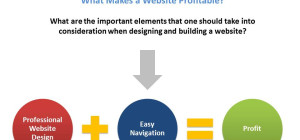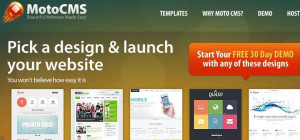 Website design any website has a definite chance to make or break the credibility of the site. It is the first thing users look forward to when visiting a new website. A well-designed website can enhance user engagement, boost conversions, and drive sales. This is why ensuring that the design is on point and attractive simultaneously is necessary. In the case of Ecommerce, this value even doubles over time to a certain limit. It is because several users login to find the right product they are in search of with a simple and realistic design. But with so much hype and innovation over the years, it is needless to say that utilizing all design elements is quite a task. To ease this challenge, we have listed some of the top unique features of an e-commerce website that needs to be used to design a website for e-commerce.
Website design any website has a definite chance to make or break the credibility of the site. It is the first thing users look forward to when visiting a new website. A well-designed website can enhance user engagement, boost conversions, and drive sales. This is why ensuring that the design is on point and attractive simultaneously is necessary. In the case of Ecommerce, this value even doubles over time to a certain limit. It is because several users login to find the right product they are in search of with a simple and realistic design. But with so much hype and innovation over the years, it is needless to say that utilizing all design elements is quite a task. To ease this challenge, we have listed some of the top unique features of an e-commerce website that needs to be used to design a website for e-commerce.
Top Design Features to look forward to
1. Intuitive and User-Friendly Navigation
User experience is paramount when it comes to an e-commerce marketplace. The website’s navigation should be intuitive, enabling users to browse products or services effortlessly. It is crucial that each product item is logically set so that any user can find it easily over time. A clear and logical navigation menu, prominently placed on the website, helps visitors quickly find their required details. You can also dedicatedly enhance the navigation by adding extra search filters and breadcrumbs. This feature allows customers to search any way they want, whether through categorization or simple search.
2. Responsive and Mobile-Friendly Design
The advent and overall dependency on mobile technology have increased to a great extent. With this constant rise in mobile dependency, it is essential to develop mobile-friendly and design-effective websites. A significant portion of online shopping now happens on smartphones and tablets. Therefore, your website should adapt seamlessly to different screen sizes and resolutions, giving users an optimal experience regardless of their device. The further mobile-friendly website improves the user experience and offers better conversion rates by reducing bounce rates.
3. High-Quality Product Images and Videos
Visual appeal is crucial in online shopping to ensure customers rightly feel and value what they are purchasing. This is why it is necessary to use high-quality product images and videos that can significantly impact purchase decisions. Make it a point that your e-commerce website design consists of compelling imagery and videos to give that personalized touch to buyers. Consider incorporating videos demonstrating product features, usage, or customer testimonials. These visuals give users a better understanding of the products and help build trust, leading to increased sales. Thereby, look for these features for the right NYC web design company.
4. Streamlined Checkout Process
The checkout process is a critical stage in the entire customer journey and buying experience. A lengthy and complex checkout process can lead to cart abandonment, negatively impacting conversion rates. To optimize the checkout process, simplify the steps required to purchase. It is also essential to implement a guest checkout option to eliminate the need for users to create an account. Be sure to provide clear and concise instructions, use auto-fill features, and offer multiple payment options to cater to different user preferences. A streamlined checkout also helps provide a specific SSL certificate, and data protection is also essential and effective.
5. Utilisation of Reviews and Ratings
In today’s digital landscape, consumers rely heavily on ratings, reviews, and social proof when purchasing. Integrating a ratings and reviews system within your e-commerce marketplace website allows customers to share their experiences and provide feedback. This indirectly helps other customers decide whether to buy a specific service. Displaying these reviews prominently helps build trust, credibility, and authenticity. Furthermore, consider incorporating social proof elements, such as customer testimonials, endorsements, or influencer collaborations, to further strengthen confidence in your marketplace.
6. Personalization and Recommendation Engine
Personalization is critical to providing each user with a tailored and relevant experience. Implementation of a personalized website design offers users to quickly get the exact product they are looking forward to when searching. You can engage users and drive them toward additional purchases by providing personalized product recommendations, related items, or recently viewed items. Personalization not only tends to improve customer satisfaction but also boosts cross-selling and upselling opportunities.
7. Robust Search Functionality
A robust search functionality is vital for an e-commerce marketplace website, especially when dealing with a large inventory. Users should be able to find products quickly and efficiently by entering relevant keywords or using filters. It helps to adequately reduce and implement an intelligent search feature that provides auto-suggestions, autocomplete, and typo corrections. You can also use advanced search filters like category, color, price, and brand details with other attributes. You can also use visually appealing features, such as incorporating relevant keywords and further information, when designing the website.
8. Order Tracking
Customers always tend to look out for e-commerce websites that offer constant tracking features. This is to ensure that the product they ordered can be rightly tracked thoroughly with Unique Identification. When designing a website marketplace design, this should be kept in mind for better value and customer satisfaction. When working on the design element, it is necessary to use the order tracking feature for better user tracking and measurement. Make sure to utilize the order tracking feature in a definite way that is easy for anyone to operate and use.
9. Constant Push Notifications
Are you looking to find the right way to target customers in your e-commerce audience? The best way to ensure it is through the help of push notifications. Push notifications instantly help users to get information about the latest updates of products and services. This is even helpful when a new promotion for a product is being launched and notified to customers through a direct notification. This enables customers to be aware of the latest updates.
Conclusion
In conclusion, designing an e-commerce marketplace website requires careful attention to user experience and functionality. By incorporating these must-have design features, you can create a seamless and engaging platform that attracts users, enhances conversions, and drives sales. But remember to prioritize each design item depending on your website’s need and functionality. By focusing on these critical elements, you can provide an exceptional online shopping experience that keeps customers coming back for more. Remember, designing a successful e-commerce marketplace website is an ongoing process. Continuously analyze user behavior, collect feedback, and make iterative improvements to optimize the user experience and choose the correct top web design companies. Try to always stay up to date with the latest design trends, technological advancements, and customer expectations to ensure that your e-commerce features website remains top in competition in this ever-evolving digital landscape.







